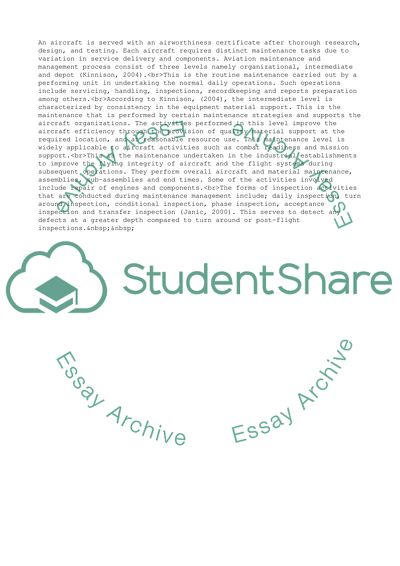Cite this document
(Aviation Maintenance Management Article Example | Topics and Well Written Essays - 2500 words, n.d.)
Aviation Maintenance Management Article Example | Topics and Well Written Essays - 2500 words. Retrieved from https://studentshare.org/management/1781138-aviation-maintenance-management
Aviation Maintenance Management Article Example | Topics and Well Written Essays - 2500 words. Retrieved from https://studentshare.org/management/1781138-aviation-maintenance-management
(Aviation Maintenance Management Article Example | Topics and Well Written Essays - 2500 Words)
Aviation Maintenance Management Article Example | Topics and Well Written Essays - 2500 Words. https://studentshare.org/management/1781138-aviation-maintenance-management.
Aviation Maintenance Management Article Example | Topics and Well Written Essays - 2500 Words. https://studentshare.org/management/1781138-aviation-maintenance-management.
“Aviation Maintenance Management Article Example | Topics and Well Written Essays - 2500 Words”, n.d. https://studentshare.org/management/1781138-aviation-maintenance-management.


